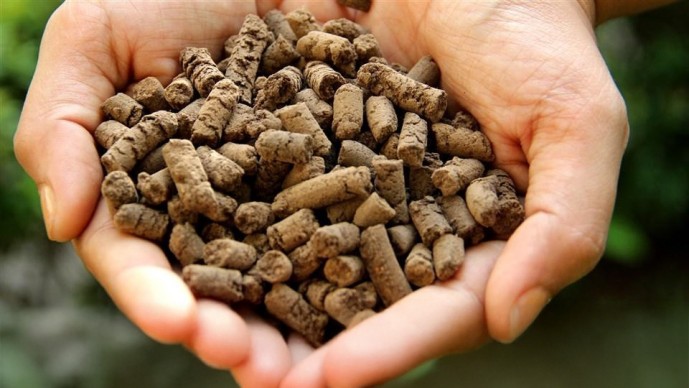An Auger to Treat Waste, A Bicycle-powered Bioreactor & Fertilizer Pellets from Human Waste
- Brian Arbogast, Nov 22, 2013

Here at the Gates Foundation, we are always looking for new ways to tackle health and development challenges. The Water, Sanitation and Hygiene team is no exception.
Our goal is to enable universal access to safe sanitation by supporting the development of radically new sanitation technologies as well as markets for new sanitation products and services.
Today, forty percent of the world's population - 2.5 billion people - practice open defecation or lack adequate sanitation facilities. An additional 2.1 billion urban residents use facilities that do not safely dispose of human waste.
Poor sanitation contributes to around 1 million child deaths from diarrhea each year. The environmental consequences are also devastating. Current toilets, sewers, and wastewater treatment systems used in the developed world are expensive and require too much land, energy, and water to be feasible for widespread use in the developing world.
That is why I am particularly excited that this week we announced three projects which will receive additional funding as part of our Grand Challenge to Create the Next Generation of Sanitation Technologies. These grantees are receiving follow-on funding based on promising results from their Phase I Grand Challenges Explorations work.
Scale Up in Recovery of Nutrients and Organic Matter from Fecal Sludge for Agricultural Production in Ghana
- Olufunke Cofie of the International Water Management Institute in Sri Lanka will develop and test fortified fertilizer pellets from treated human excreta for market sale. Production at large scale could enhance agricultural productivity in sub-Saharan Africa, while also contributing to reduction in environmental health risk from untreated human waste. During the first phase of her project, Cofie tested several materials that are inexpensive and locally available as binding agents for producing robust fecal sludge pellets suitable for packaging and transportation. She also developed a pelletization unit to produce the pellets, tested their performance as fertilizers, and carried out cost, benefit, and market analyses in Ghana. In the next phase, Cofie and co-investigator Josiane Nikiema will work with partners to establish a supply chain using septic truck operators to scale up production, set up a distribution and sales strategy, and promote the use of their pellets to farmers in Northern Ghana.
Shear Extrusion to Treat Fecal Waste
- Gary Foutch and AJ Johannes of Oklahoma State University in the U.S. propose to develop a small-scale device in which an auger forces feces and other solid wastes device through a die that results in high temperatures and pressure that dewaters the waste and destroys microorganisms. The device could reduce odor, insects, surface and ground water contamination, and the associated spread of diseases. They have designed a laboratory-scale extruder, which is a fixed shell containing a rotating inner core driven by a motor, and an air-driven plunger to push in the material and generate pressure. They tested its performance using different operating conditions. Preliminary results revealed that their method could destroy 99 percent of parasitic worm eggs in baboon feces. With this additional funding, they will develop and field test a next-generation stand-alone extruder that can effectively sanitize different types of solid sludge in the field, and is also capable of water recovery via evaporation. They will also design a sanitation module from their extruder that can be incorporated into the Omni-Ingestor technology, which is a modular system that combines sanitation with waste removal and transportation.
Vortex Bioreactors for the Processing of Fecal Sludge and Waste Water
- Mike Allen of Plymouth Marine Laboratory in the United Kingdom proposes to develop a low cost, vortex-based bioreactor that is driven by hand or a bicycle to separate fecal matter from waste water and at the same time introduce bactericidal agents to decontaminate the waste for recycling or safe disposal. They have already successfully designed and built a desk-top vortex bioreactor to test different biocidal agents for their ability to kill bacteria, and to be physically immobilized to enable long term use. Copper embedded onto alginate beads was the most effective and robust combination, and glass beads were shown to bind helminth eggs to enable their separation. They also characterized material flow through the vortex bioreactor to optimize performance. Now they will work to effectively incorporate the biocidal agent, which requires a high level of mixing, with a method for separating and removing helminth eggs, which requires low turbulence, into one vortex bioreactor by testing different methods of binding helminth eggs. They will also perform field testing with experienced partners, and further optimize the reactor design to reduce costs and promote easy use.
To learn more about our Water, Sanitation & Hygiene strategy, visit here.